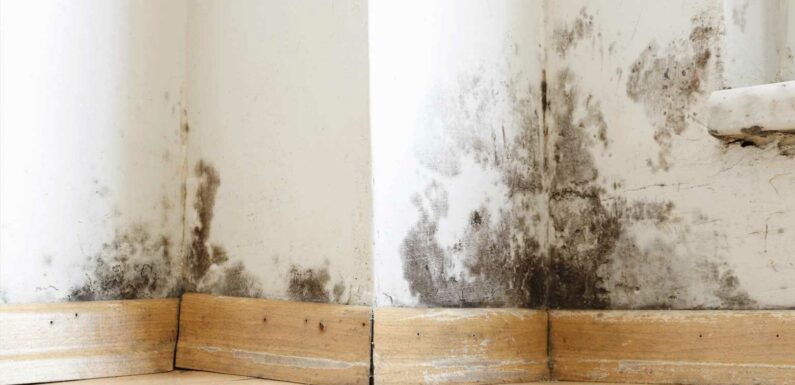
MOULD on the walls is not only nasty to look at, it can be incredibly dangerous.
Here are some tips on how you can prevent it from lingering in your home.
What causes mould?
Mould is a type of fungi that live on animal or plant matter, including building materials like wood and plasterboard, and furnishings like curtains, carpets and boxes.
It plays a major role in the ecosystem of the earth – but it can be dangerous inside the home.
Typically mould is caused by humidity, condensation or poor ventilation.
Rising damp is also a reason your walls and ceilings could be mouldy.
READ MORE ON CLEANING
I’m a cleaning fan three places in your home you’re forgetting to scrub
Hacks you need to keep your house spotless & why anti-bac spray is a rip off
Rising damp could indicate a serious problem with the internal walls as a pipe behind the walls or under your bath may have burst.
How to get rid of mould
There are many ways to treat mould in your home, but whichever method you use, you should always protect yourself from mould by wearing rubber gloves and a mask that covers your mouth and nose.
Keep the area well ventilated with windows and doors open to prevent it spreading to other areas in your home.
Hydrogen Peroxide
Pour three per cent strength hydrogen peroxide into a bottle and spray it on the affected area.
Most read in Fabulous
Prince Harry slams royals' ‘institutional control’ and says Firm is ‘scared’
Harry must be stripped of Duke title for 'trashing' royal family, demand MPs
Harry reveals steamy details of sex with Meg after sneaking into Soho House
We drove four hours to go to the UK’s biggest B&M – it was so worth it
Let it sit for 10 minutes, or until it stops bubbling.
Using a cloth or soft brush, scrub the mould away.
Wipe the surface dry with a clean cloth.
Repeat if necessary.
White Vinegar
Spray some vinegar on the surface and leave it for at least an hour.
Scrub with a brush then wipe with a damp cloth.
Leave to dry.
Remember to never mix vinegar with bleach as it creates a toxic gas which can be deadly if inhaled.
Baking soda
Dissolve baking soda in water, and spray it on the mould.
Apply the mixture and scrub with a brush.
Wipe away the excess with a clean, damp cloth then leave it to dry.
Is mould dangerous?
Living with mould in your home can affect your physical and mental health.
According to research by Envirodent, damp caused by condensation is on the rise, affecting 1 in 5 homes in the UK.
Mould can be harmful for vulnerable groups including the elderly, infants and children and those with pre-existing health conditions.
Mould impacts your immune system and can cause respiratory problems.
The spores produce allergens that can cause sneezing, a runny nose, skin rashes and even asthma attacks.
How to prevent mould from coming back
The key to mould prevention is keeping air moisture to a minimum.
Read More on The Sun
Little-known middle aisle tricks by Aldi & Lidl to get you to spend more
Sky is giving out set-top box upgrades for free – are you eligible?
A good way of reducing air moisture is using a dehumidifier.
It is also important to dry any condensation on walls or windows, as this creates the perfect conditions for mould.
Source: Read Full Article








